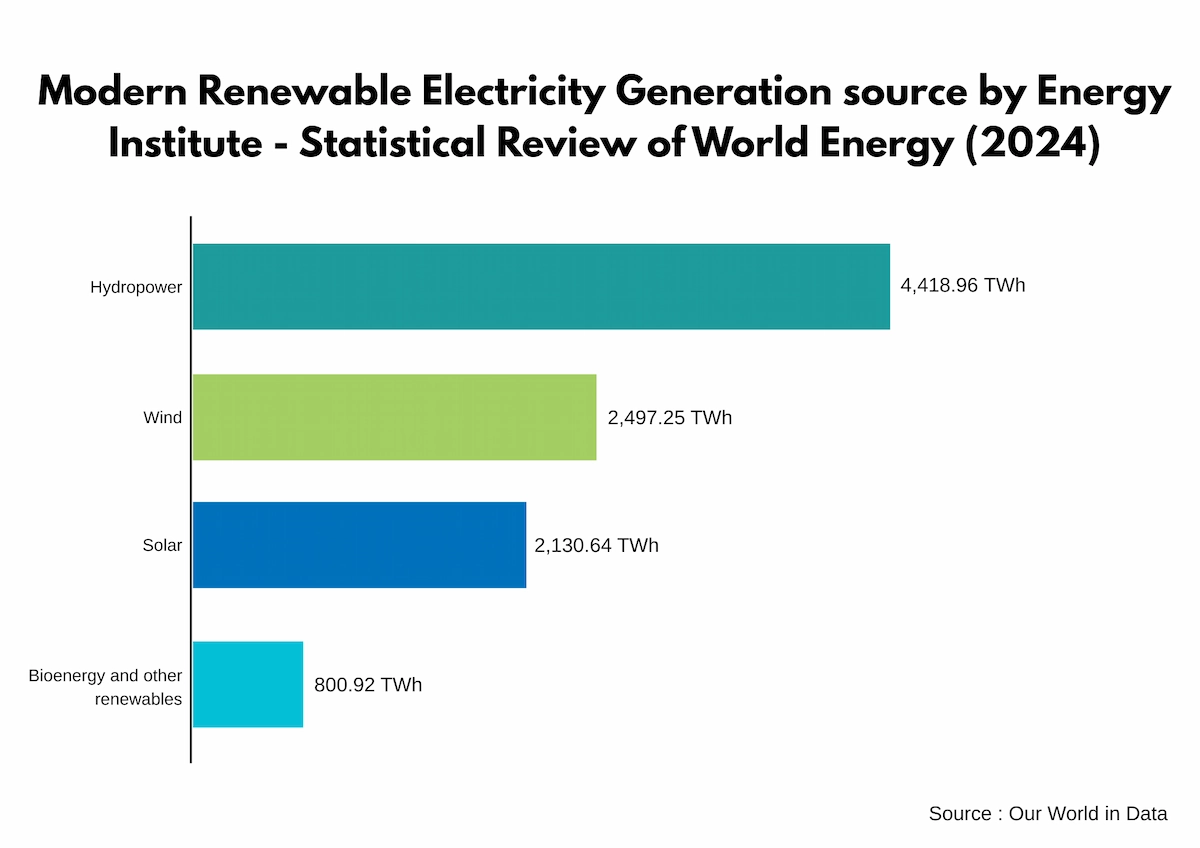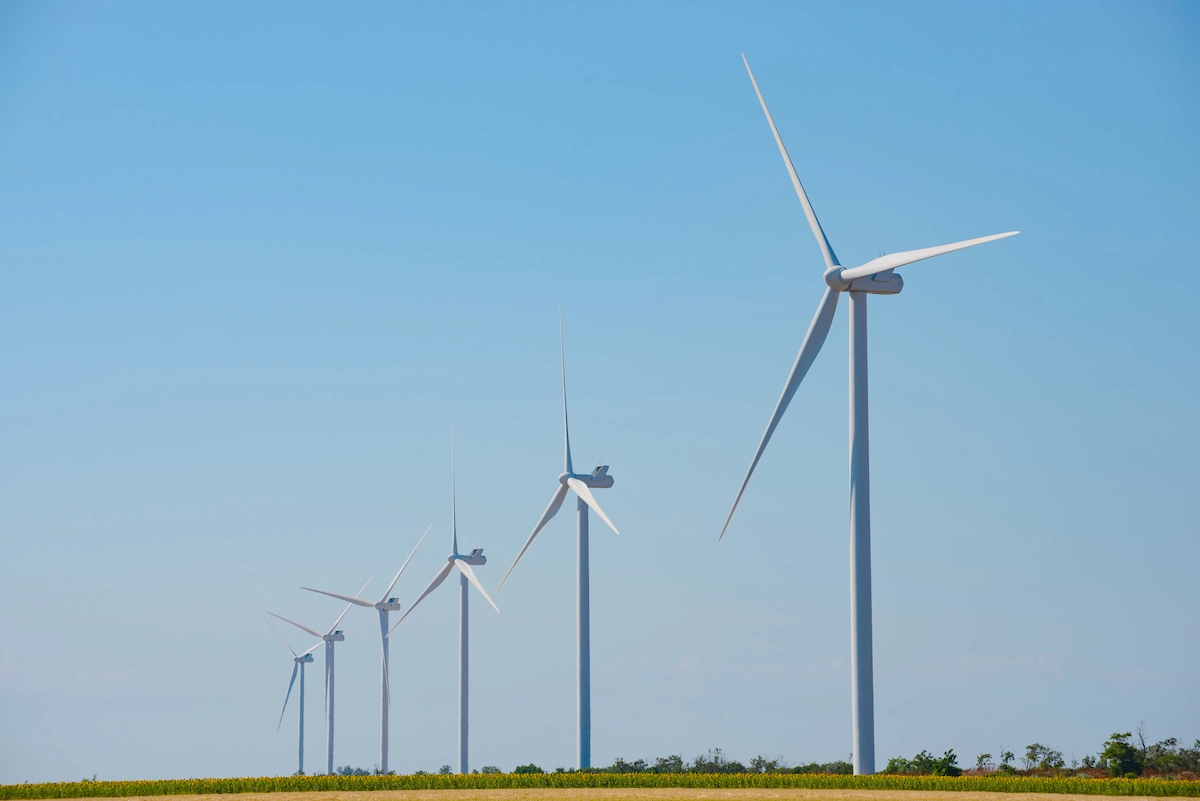
24-11-2025
6 Advantages of Renewable Energy and Its Global Potential
Now that the impact of climate change is becoming real, it is time for us to adopt alternative energy sources and reduce carbon emissions. Alternative energy, such as renewable energy, offers environmental and human benefits.
This article discusses the advantages of renewable energy and why we should shift to this energy. Let’s dig deeper into the following information!
The Potential of Renewable Energy

Before talking about the benefits of renewable energy, let’s take a look at its potential as an alternative energy source to fossil fuels.
Since the Industrial Revolution (the 18th century), most countries around the world have used fossil fuels. This certainly contributes primarily to global climate change recently.
Our World in Data notes that three-quarters of greenhouse gas emissions come from burning fossil fuels for energy. In fact, fossil fuels contribute significantly to local air pollution.
That’s why the use of renewable energy is encouraged to reduce dependence on nonrenewable fossil fuels.
Renewable energy is an energy source that can be utilized continuously. Its potential is now being promoted through the development of technologies that support its application.
In 2024, hydropower became the most widely used renewable energy source, accounting for 4,418.96 TWh. Then, wind and solar power were ranked 2nd and 3rd, respectively.

Moreover, the International Renewable Energy Agency noted that 90% of the decarbonization solution in 2025 will involve renewable energy that is more cost-effective and efficient. Thus, the use of renewable energy shows positive progress and can be a more environmentally friendly alternative.
Read also: New Renewable Energy: Definition, Indicators, and Examples
The Advantages of Renewable Energy

There are many renewable energy sources you can use, such as solar, wind, geothermal, and hydropower. Here are the advantages of renewable energy you must know:
1. Unlimited Supply
The first advantage is that the supply never runs out because it comes from naturally renewable sources, such as sunlight and wind.
This is what distinguishes it from nonrenewable energy such as fossil fuels. Fossil fuels come from the remains of living things that have been buried in the Earth's layers for millions of years. As a result, the supply can be depleted if it continues to be used, whereas fossils cannot be formed in just a matter of years.
2. Air and Water Pollution Free
The combustion of fossil fuels produces air pollution containing carbon monoxide, sulfur dioxide, and nitrogen oxides. These pollutants can threaten public health if their levels are not reduced.
Meanwhile, power plants that use renewable energy do not produce waste or pollution that can contaminate the air or water. Consequently, it can lead to cleaner air and water.
3. No or Fewer Carbon Emissions
Renewable energy produces fewer or no greenhouse gas emissions compared to nonrenewable energy. The combustion of fossil fuels produces high levels of greenhouse gas emissions and is a leading cause of climate change.
Because renewable energy produces only a small carbon footprint, its source has a positive impact on the environment.
4. Supporting Energy Independence
As explained previously, nonrenewable energy sources are difficult to replenish because they take millions of years to form. On the other hand, renewable energy provides greater energy security because it can be replenished naturally.
It indicates that countries can begin adopting renewable energy to reduce their dependence on nonrenewable energy or on energy imports from abroad.
5. More Cost-Effective
Renewable energy is more cost-effective than nonrenewable energy sources, such as fossil fuels. In fact, renewable energy is currently the most affordable energy source in most countries worldwide.
The International Renewable Energy Agency states that more than 90% of current renewable projects are more affordable than fossil fuel alternatives. Also, wind energy is 53% more cost-effective than fossil fuels.
It makes renewable energy an attractive option for countries around the world, especially for developing countries and low-income countries. They have a more economical energy source option without having to import fossil fuels.
6. Potential Job Openings
Renewable energy development is currently underway, and this process typically requires skilled workers. Not only in the operational process, but it also opens up opportunities for people who want to become power plant technicians and solar panel installation service providers.
Read also: Solar Power Plant: Definition, Benefits, and Example
Disadvantages of Renewable Energy

While renewable energy is a solution to global warming, you must also consider its disadvantages to mitigate potential risks. Here are some disadvantages you must know:
1. High Initial Cost
You might need a high initial cost for installation and component preparation. Yet, you can save more operational and maintenance costs for a long time since it is renewable.
2. Prone to Weather Changes
Most renewable energy is naturally replenished, such as water and sunlight. Therefore, it is prone to weather changes.
A hydropower plant could stop working during a drought. However, some renewable energy sources already have batteries to store electricity when not in use.
In addition, many renewable power plants use artificial intelligence and other technologies to analyze weather data and provide you with a forecast.
3. Location Permit
Several power plants rely on specific areas, such as wind farms. It is common for renewable energy systems to require more land, so it is necessary to ensure compliance with applicable regulations regarding location requirements.
That concludes the advantages and disadvantages of renewable energy you can learn. Renewable energy can be a choice in reducing carbon emissions and dependence on nonrenewable energy.
One of the most commonly used renewable energies is solar panels. If you need a solar panel provider, Krakatau Chandra Energi can be the solution. This subsidiary of Chandra Asri Group provides on-grid, off-grid, and hybrid solar panels. Interestingly, you can choose solar panels according to your company's needs.
Entrust your company’s renewable energy needs to Krakatau Chandra Energi!
Read also: How to Stop Global Warming in 7 Easy Ways: Must Note!